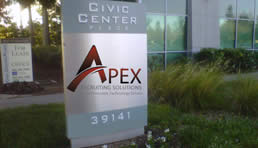




Fleets and their recruiting partners have several options for how they acquire the leads they need. These tactics can all have their own advantages and disadvantages. The key to determining which leads types work best for you. Let’s briefly touch on some of the more prevalent ways fleets come into leads.
 Short form driver applications are one of the most common ways an interested driver’s information is gathered. Typically only the basic information is included in these forms: name, email, phone number, and possibly a question about geographical location.
Short form driver applications are one of the most common ways an interested driver’s information is gathered. Typically only the basic information is included in these forms: name, email, phone number, and possibly a question about geographical location.
That’s it. Nothing overly complicated or invasive, which is the idea. Gathering lead information gained via short forms is cost effective and can be attractive to fleets for that reason. There’s a slight catch that comes with that lower cost though. With the inherent lack of detail, fleets may find themselves wasting time going after a lead that ultimately does not meet their full requirements.
This is the major drawback to the short form app. The low-cost and lack of specificity in the form itself almost ensures that fleets will have to invest more time and effort into narrowing down potential leads. Another drawback would be the lower conversion rates associated with short form application completion.
 Long form driver applications go into more detail than the previously discussed short forms. These gather not only name, email, and phone, but go into greater detail to help fleets know if the driver is a good fit for them.
Long form driver applications go into more detail than the previously discussed short forms. These gather not only name, email, and phone, but go into greater detail to help fleets know if the driver is a good fit for them.
These forms frequently ask for ticket/accident histories and it is not unusual for carriers to ask permission to run a multiple year background check on the applying driver.
All of this is designed to give the carrier as much information as possible to help them filter through leads quickly and identify which prospective drivers are the most attractive to them and meet all their requirements.
With this increased detail they regularly yieldhigher conversion rates . . . but at a higher price than their short form counterparts.
 Carriers also have the option of going using a multi-carrier application approach to find leads. These are not dissimilar to long form applications. The major difference is the lack of company specificity and a less expensive price.
Carriers also have the option of going using a multi-carrier application approach to find leads. These are not dissimilar to long form applications. The major difference is the lack of company specificity and a less expensive price.
Multi-carrier apps may ask many of the same questions featured on the company specific long form applications. Once the application is completed, however, the lead information gathered can be given to any fleet (assuming their established qualifications and criteria have been met).
The more in depth information provided in the application helps fleets know if the prospective driver is someone they’d like to pursue. However, one thing to keep in mind is that everyone can buy the same leads gained from these forms. That means more competition from other fleets/recruiters, and typically a much lower conversion rate.
So, in the end it may come down to whether you’d prefer to spend more money for a handful of solid quality leads or less money for leads you will have to compete for.
 Incoming driver calls can be a really mixed bag as far as results go. On one hand it eliminates one of the biggest problems recruiters face – engaging with an interested driver on the phone.
Incoming driver calls can be a really mixed bag as far as results go. On one hand it eliminates one of the biggest problems recruiters face – engaging with an interested driver on the phone.
When the driver is the one initiating contact by calling in through a click-to-call button, landing page, website, or phone numbers obtained via search, it puts recruiters into direct and immediate contact with a driver who is actively seeking them out. That is of course a huge advantage. This means the driver is interested and wants to take the necessary steps moving forward.
The downside, however, is that the fleet and their recruiters will have little to no idea of who they are talking to when the call comes in. This means that while the driver is very interested, they may also be unqualified or not meet company specific requirements. Only after proper vetting and conversing with the prospective driver can the recruiter determine this. Meaning valuable time could be wasted on an unqualified prospect.
As you can see, there are different ways to gain lead information. Each with their own pros and cons.
In the end it comes to determining two things.
That’s not always an easy thing to figure out, but knowing where you want to go and what can help you get there will steer your decisions when it comes to how you go about acquiring and pursuing leads.
If you’re not exactly sure of which way to go or what to do next, don’t panic. Our team would love to help and work with you to achieve all your recruiting goals.